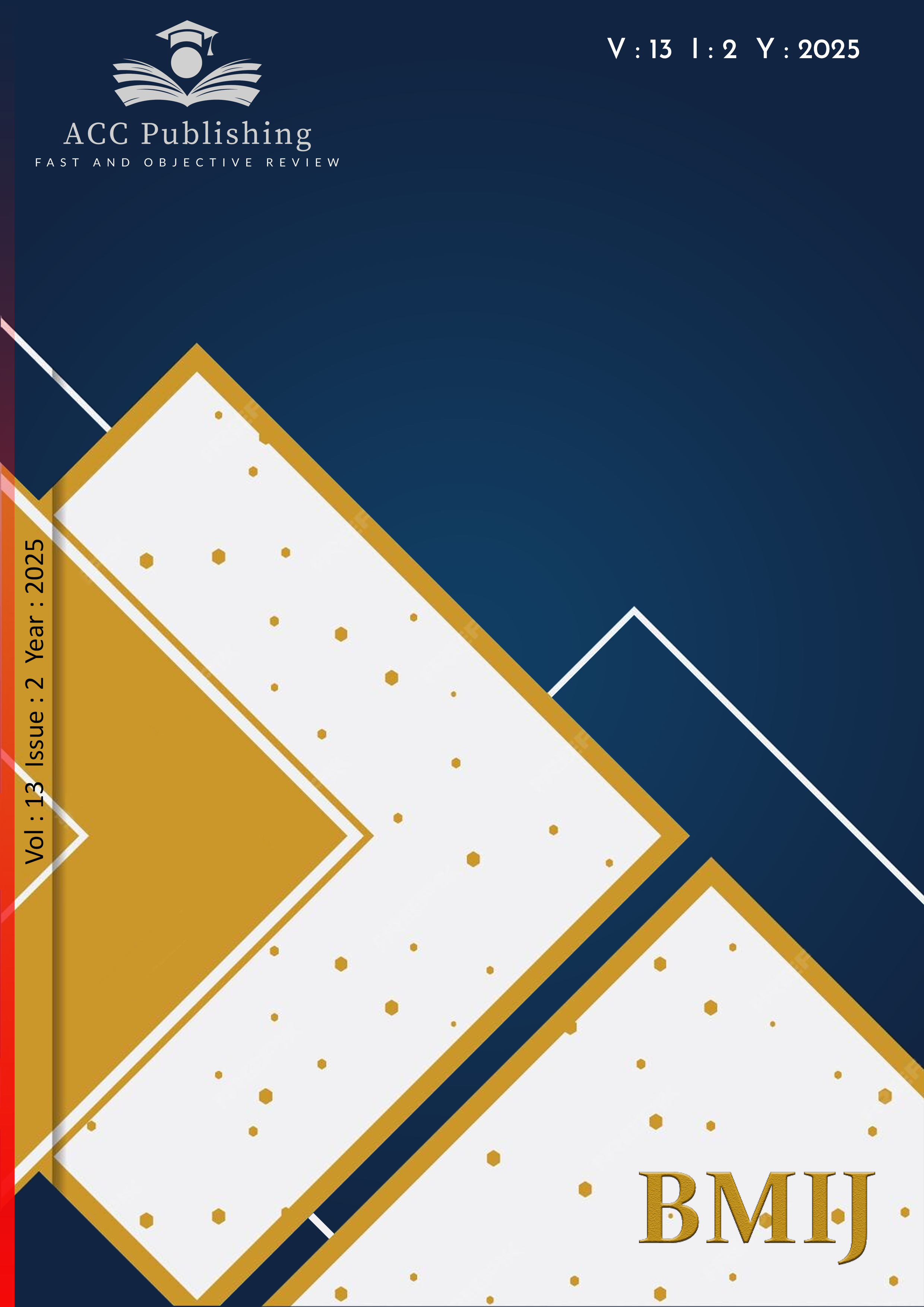
Yayınlanmış 25.06.2025
Anahtar Kelimeler
- Communication, Health Communication, Health Communication Problems
- İletişim, Sağlık İletişimi, Sağlık İletişimi Sorunları
Nasıl Atıf Yapılır
Telif Hakkı (c) 2025 Emine Murt- Yılmaz Daşlı

Bu çalışma Creative Commons Attribution-NonCommercial-NoDerivatives 4.0 International License ile lisanslanmıştır.
Nasıl Atıf Yapılır
Öz
Bu çalışmanın amacı üniversite öğrencilerinin yaşadığı sağlık iletişimi sorunlarını ortaya çıkarmaktır. Çalışmanın evrenini sağlık kuruluşlarından hizmet alan, Sivas Cumhuriyet Üniversitesi Sağlık Bilimleri Fakültesinde öğrenim gören 2.695 öğrenci oluşturmaktadır. Çalışmanın örneklemini 400 öğrenci oluşturmakta olup tabakalı örnekleme yöntemi ile katılımcılar belirlenmiştir. Araştırmada veri toplama aracı olarak Yeşildal, Akman Dömbekci ve Öztürk tarafından geliştirilen Sağlık İletişimi Sorunları Ölçeği kullanılmıştır. Araştırma kapsamında ölçeğin Cronbach alfa değeri 0,809 olarak bulunmuştur. Çalışma ile hemşirelik bölümü öğrencilerinin (Ort.=2,69) iletişim engelleri düzeyi sağlık yönetimi (Ort. =2,97), fizyoterapi ve rehabilitasyon (Ort.=2,99) ve beslenme ve diyetetik öğrencilerine (Ort.=2,98) göre daha düşük olduğu bulunmuştur. Sağlıkta iletişim sorunları ölçeği ve sosyal iletişim alt boyut düzeyleri öğrencilerin eğitim aldıkları bölüme göre istatistiksel olarak farklılık göstermemektedir (p>0,05). Sağlıkta iletişim sorunları ölçeği ve alt boyut ortalama puanları cinsiyete, sınıfa, sağlık kurumuna başvuru sayısına ve aile türüne göre istatistiksel olarak farklılık göstermemektedir. Etkili iletişim alt boyutu ile sosyal iletişim (r=0,370) ve iletişim engelleri (r=0,483) alt boyutları arasında pozitif yönlü düşük kuvvetli bir ilişki bulunmaktadır. Sosyal iletişim alt boyutu ile iletişim engelleri alt boyutları arasında (r=0,324) düşük kuvvetli pozitif yönlü bir ilişki bulunmaktadır. Çalışma sonucunda, sağlık iletişimi stratejilerinin geliştirilmesi ve alanda karşılaşılan sorunların çözümüne yönelik bütüncül, disiplinler arası ve uygulamaya dönük yaklaşımların benimsenmesi gerektiği, bu sayede hem sağlık hizmetlerinin niteliğinin artacağı hem de hasta ile sağlık çalışanı arasındaki etkileşimi güçlendirerek, daha etkili ve insani bir sağlık hizmeti sunumunun mümkün kılacağı düşünülmektedir.
Referanslar
- Arslanoğlu, A. and Özargun, G. (2023). The impact of health communication problems on the treatment process. Journal of Health and Social Welfare Research, 5(2), 212–223. https://doi.org/10.55050/sarad.1296929
- Avcı, K. and Avşar, Z. (2014). Health communication and new media. Journal of Communication Theory and Research, 39, 181–190.
- Başol, E. (2018). Communication problems and solution suggestions between patients and healthcare professionals (doctors and nurses). International Anatolia Academic Online Journal: Social Science Journal, 4(1), 1–18.
- Berber, G. (2024). An analysis of studies conducted in Turkey on new media in health communication. Tirebolu Faculty of Communication Academic Journal, 1(1), 1–23.
- Büyükaslan, A. (2018). Sectoral observations in health communication. Erciyes Journal of Communication, 5(3), 2–10. https://doi.org/10.17680/erciyesakademia.313921
- Çam, O. and Çılgınoğlu, H. (2021). Prominent health practices in medical tourism within the scope of health tourism. Oğuzhan Journal of Social Sciences, 3(2), 197–216.
- Desmond, J. and Copeland, L. (2010). Communication with today's patients (D. Yamaç & E. Tekin, Trans.). Eflatun Publishing.
- Doğan, A. (2017). The concept and process of communication. In Introduction to Communication (pp. 4–22). Atatürk University Open Education Faculty. https://adm.ataaof.edu.tr/pdf.aspx?du=/1cmhhxhp9vvhvi04o9/ba==
- Duğan, Ö. and Arslan, A. (2015, November). A review of violence in healthcare in the context of healthcare worker–patient communication. Health Communication Symposium, Eskişehir. https://www.dropbox.com/scl/fo/owrgqph2xinu4a6i2kvpm/AAuStgvdRhKzvx_KqS5qc6Y?dl=0
- Ertekin, İ., Ilgın, H. Ö. and Ataman Yengin, D. (2018). Organisational communication theories. The Turkish Online Journal of Design, Art and Communication, 8(2), 297–311.
- Gedikli, E. (2024). Evaluation of problems in the Turkish healthcare system from the perspective of health management students as service recipients. BANU Journal of Health Sciences and Research, 6(2), 386–393. https://doi.org/10.46413/boneyusbad.1435406
- Gemlik, N., Şeker, R., Arslanoğlu, A. and Çengel, Ö. (2022). A qualitative study on communication problems and solution proposals among employees in health boards. Journal of Health Academicians, 9(4), 344–350. https://doi.org/10.52880/sagakaderg.1193525
- George, D. and Mallery, P. (2010). SPSS for Windows step by step: A simple guide and reference 17.0 update (10th ed.). Pearson.
- Glos, L. and Pinet-Peralta, L. M. (2023). The influence of institutional factors on patient–provider communication and interactions in the U.S. healthcare system. Journal of Public Health: From Theory to Practice, 31, 123–134. https://doi.org/10.1007/s10389-020-01426-5
- Göksu, N. F. (Ed.). (2018). Health communication. Istanbul University Faculty of Open and Distance Education.
- Gül, N. and Akman Dömbekci, H. (2023). The effect of health literacy on health communication problems: An evaluation for the province of Manisa. Vizyoner Dergisi, 14(38), 649–665. https://doi.org/10.21076/vizyoner.1197691
- İnan, H. and Canoğlu, M. (2016). An analysis of organisational marketing efficiency and promotion strategies of health institutions within the scope of medical tourism in Turkey. Çukurova University Journal of Social Sciences Institute, 25(2), 113–126. https://dergipark.org.tr/en/pub/cusosbil/issue/32037/353086
- Ishikawa, H. and Kiuchi, T. (2010). Health literacy and health communication. Biopsychosocial Medicine, 4(1), 1–5. https://doi.org/10.1186/1751-0759-4-18
- Karasar, N. (2016). Scientific research method: Concepts, principles, techniques (31st ed.). Nobel Publishing.
- Kayret, G. and Denizli, U. (2023). A study on the communication skills and job commitment levels of healthcare workers. International Journal of Entrepreneurship and Management Inquiries, Special Issue 2, 22–35. https://doi.org/10.55775/ijemi.1362654
- Kızılkaya, S. (2023). The mediating role of physician loyalty in the relationship between health communication problems and mistrust in health systems. Bingöl University Journal of Social Sciences Institute, 26, 293–302. https://doi.org/10.29029/busbed.1298753
- Koçak, A. and Bulduklu, Y. (2013). Health communication: Motivation of elderly individuals to watch health programs on television. Selçuk Communication, 6(3), 5–17. https://doi.org/10.18094/si.72403
- Kuru, H. (2024). Examination of the concepts of health, wellness, and well-being. The Journal of Istanbul Rumeli University Health Sciences, 2(4), 1–11.
- Kuşku Özdemir, E. (2023). Perceptions regarding the role of language and communication skills in health communication: A qualitative evaluation for healthcare professionals. Korkut Ata Journal of Turkic Studies, Special Issue 1, 1529–1549. https://doi.org/10.51531/korkutataturkiyat.1357996
- Lee, M., Ju, Y. and You, M. (2019). The effects of social determinants on public health emergency preparedness mediated by health communication: The 2015 MERS outbreak in South Korea. Health Communication. https://doi.org/10.1080/10410236.2019.1636342
- Mısırlıoğlu, A. and Doğan, F. (2025). Examination of studies in the field of health management in international literature through word cloud analysis. International Journal of Social and Humanities Sciences Research (JSHSR), 12(115), 66–72. https://doi.org/10.5281/zenodo.14787245
- Nal, M. (2021). Trust in the healthcare services system in Turkey. BANÜ Journal of Health Sciences and Research, 3(1), 1–10. https://doi.org/10.46413/boneyusbad.863269
- Okay, A. (2020). Health communication. Der Publishing.
- Özmen, S. (2018). Introduction to health communication. In N. F. Göksu (Ed.), Health communication (pp. xx–xx). Istanbul University Open and Distance Education Faculty Press.
- Öztürk, Ş. (2009). The transformation of human-centered relationships in the health sector. Health Thought and Medical Culture Platform, 8, 42–47. https://www.medipol.edu.tr/sites/default/files/document/SD_Dergi_Sayi8-43-48.sayfalar_Sule_Yuksel_Ozturk.pdf
- Rogers, E. M. (1994). The field of health communication today. American Behavioral Scientist, 38(2), 208–214. https://doi.org/10.1080/108107396128202
- Sezgin, D. (2015). The need for a paradigm in health communication: A call for interdisciplinary cooperation. Ankara University Faculty of Medicine Journal, 68(3), 95–101. https://doi.org/10.1501/Tıpfak_000000897
- Singh, S., Evans, N., Williams, M., Sezginis, N. and Baryeh, N. A. K. (2017). Influences of socio-demographic factors and health utilisation factors on patient-centered provider communication. Health Communication. https://doi.org/10.1080/10410236.2017.1322481
- Süllü Durul, S. and Özkan Kutlu, T. (2024). Violence in online environments: Studies in the field of communication. In 11th International Communication Days / Digital Inequality and Data Colonialism Symposium (p. 106). Istanbul, Türkiye.
- Taşkıran, H. B. and Yıldız, E. (2019). The role of health communication campaigns and new media in preventing health-related risks. Fourth Estate International Refereed Journal, 2(2), 111–133. https://doi.org/10.33464/dorduncukuvvet.582332
- Temel, Ş. and Güzel, Ş. (2025). The relationship between health communication problems and digital health information-seeking behavior and patient empowerment: A cross-sectional and descriptive study. Turkish Clinics Journal of Health Sciences, 10(1), 188–197. https://doi.org/10.5336/healthsci.2024-102959
- Uludağ, A. (2011). Perspective of hospital patient rights boards on communication-related complaints: The case of Konya hospitals. Turkish Clinics Journal of Health Sciences, 31(3), 653–663. https://doi.org/10.5336/medsci.2009-16481
- Vardarlıer, P. and Öztürk, C. (2020). The role of social media use in health communication. Sociological Thought, 5(1), 1–18. https://doi.org/10.37991/sosdus.730815
- Wynia, M. K. and Osborn, C. Y. (2010). Health literacy and communication quality in health care organisations. Journal of Health Communication, 15(2), 102–115. https://doi.org/10.1080/10810730.2010.499981
- Yeşildal, M., Akman Dömbekci, H. and Öztürk, Y. E. (2021). Health communication problems: A scale development study. Turkish Journal of Social Work Research, 5(2), 108–119.
- Yıldırım, N. and Bulut, M. (2023). A critical view of the concept of health. Journal of Civil Society, 33(2), 55–62.
- Yılmaz, D. and Günay, M. A. (2022). Health communication in Turkey: A study on healthcare professionals. İNİF E-Journal, 7(1), 75–91. https://doi.org/10.47107/inifedergi.977601
- Yorulmaz, R. and Erdem, R. (2021). A conceptual framework on healthy living. International Journal of Health Management and Strategies Research, 7(1), 57–74.



